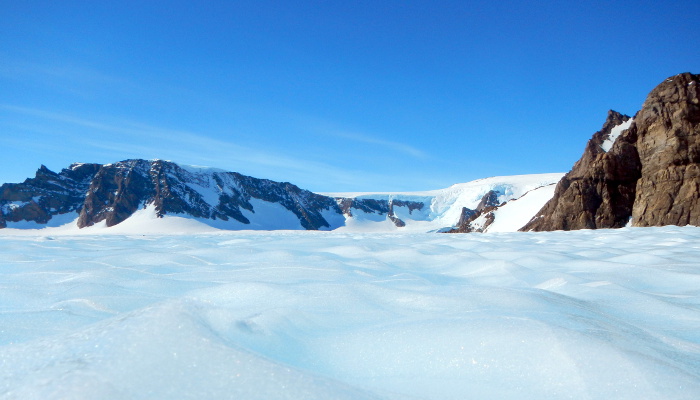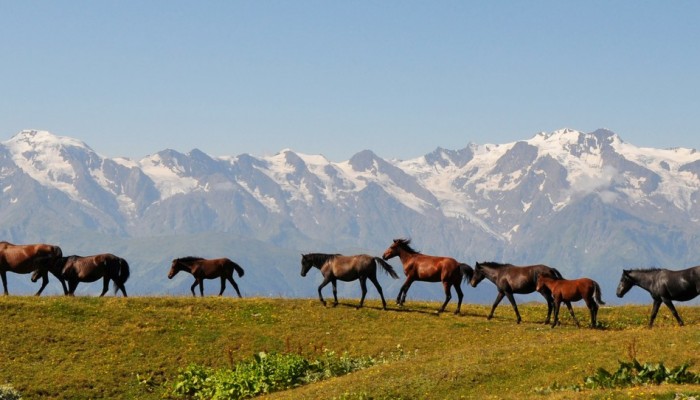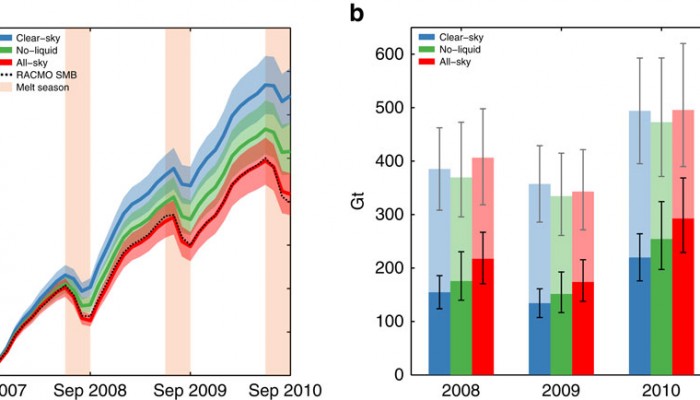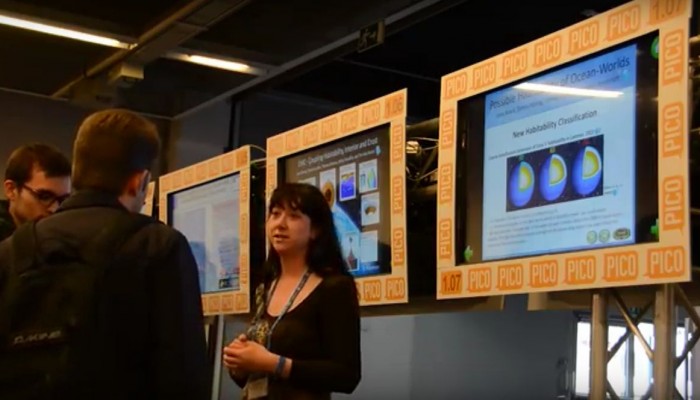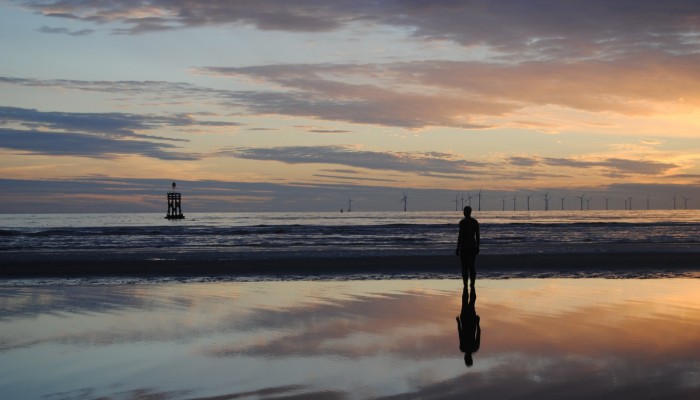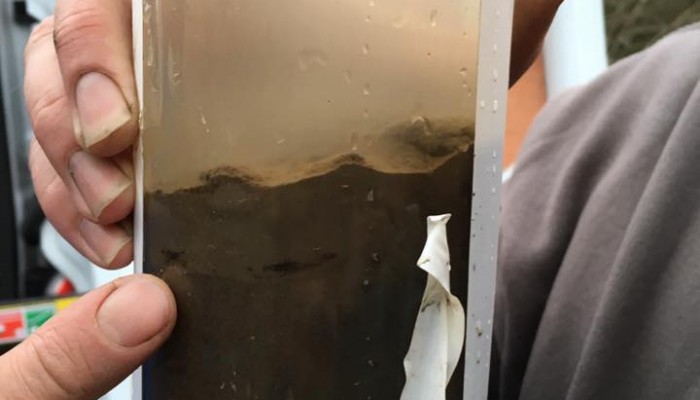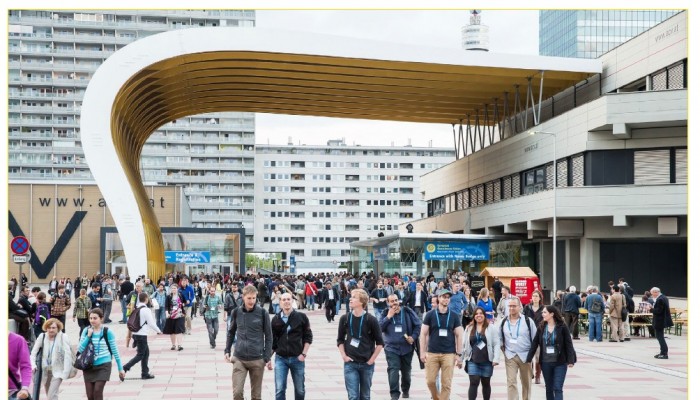The blue ice areas of Antarctica are one of the most fascinating parts of the ice sheet. In these regions, snowfall is so low that the ice is laid bare by the wind and consequently sublimates. This exposes beautiful, blue ice surfaces, like an ocean frozen in time. This picture was taken at a site named “Windy Corner” by the Kottas Mountains, in the northernmost part of the Heimefrontf ...[Read More]
GeoLog
Imaggeo on Mondays: The retreating glaciers of the Svaneti Range, Georgia
Today’s Imaggeo on Mondays picture shows the central section of the Svaneti Range, located in the Svaneti Region – a historic province of northwestern Georgia. The range is the second biggest range formed by the modern glaciation on the southern slopes of the Georgian Caucasus Mountains. In today’s post, Levan Tielidze, a researcher at Ivane Javakhishvili Tbilisi State University, writes about the ...[Read More]
Cryospheric Sciences
Image of the Week — Greenland ice sheet and clouds
A new study combining satellite observations and model simulations shows that clouds increase meltwater runoff in Greenland by one-third compared to a cloud-free scenario. Precipitation effects not considered, clouds above the Greenland ice sheet reduce its Surface Mass Balance (SMB) [red in figure] compared to clear-sky conditions [blue in figure]. Because clouds trap the outgoing radiation from ...[Read More]
GeoLog
GeoPolicy: An overview of EU funding for the Earth, atmosphere, and space sciences
Are you thinking of applying for funding? Or are you considering a career in academia and want to know where your research funding could come from? The European Union (EU) has large financial resources available for academic scientific research and innovation (R&I). This is in addition to national government funding bodies. This blog post, the 5th in the EGU’s GeoPolicy series, introduces R&am ...[Read More]
GeoLog
GeoTalk: Lena Noack, Early Career Scientist Representative
In addition to the usual GeoTalk interviews, where we highlight the work and achievements of early career researchers, over the next few months we’ll be introducing the Division early career scientist representatives (ECS). They are responsible for ensuring that the voice of EGU ECS membership is heard. From organising short courses during the General Assembly, through to running Division Blogs an ...[Read More]
Energy, Resources and the Environment
Communicating Contested Geoscience at EGU 2016
Communicating with the public is increasingly an issue for geoscientists both in research and in industry, but how do we deal with communicating those aspects of our work that are controversial? Many scientists shy away from those issues that are likely to draw the attention of an angry public, because, quite reasonably, they don’t want to be attacked for just doing their job. But these controvers ...[Read More]
GeoLog
Imaggeo on Mondays: Man-made landscape
The landscape of the Mersey Estuary in Liverpool Bay is ever changing; it offers the opportunity to observe the changing geomorphology of a river estuary which is closely linked to a very urban and man-made landscape. For more on this unique setting, read today’s Imaggeo on Mondays post brought to you by Maria Burguet Marimon. This picture was taken at Crosby beach, which is located just at ...[Read More]
Seismology
Peer review: Single-, double-blind, or open discussion
Within the scientific community, it is common practice that the peer-review process for a submitted article to a journal is kept anonymous. That is, only the journal Editor selects (and knows) who the referees are, usually three. This is also known as single-blind review. One of the main reason behind this custom is to allow the referees give genuine feedback, without fear of causing any personal ...[Read More]
Geology Jenga
Lake mud can offer a crucial long-term perspective on flooding
The severe flooding that has hit much of northern England during the last few weeks (and northeastern Scotland right now) has generated significant discussion and debate about why floods happen, how often they occur and what we can do about it. The fact is there’s no simple answer to any of these questions: the hydrometeorological cycle is a complex beast and our actions have altered it in m ...[Read More]
GeoLog
Abstract deadline for EGU 2016 fast approaching: A first-timer’s guide to the 2015 General Assembly
Are you considering attending the upcoming EGU General Assembly in Vienna? The conference brings together geoscientists from all over the world to one meeting covering all disciplines of the Earth, planetary and space sciences.. This year, the meeting will be held from the 17 to 22 April at the Austria Centre Vienna. The deadline for the submission of abstracts is upon us, closing next Wednesday t ...[Read More]

